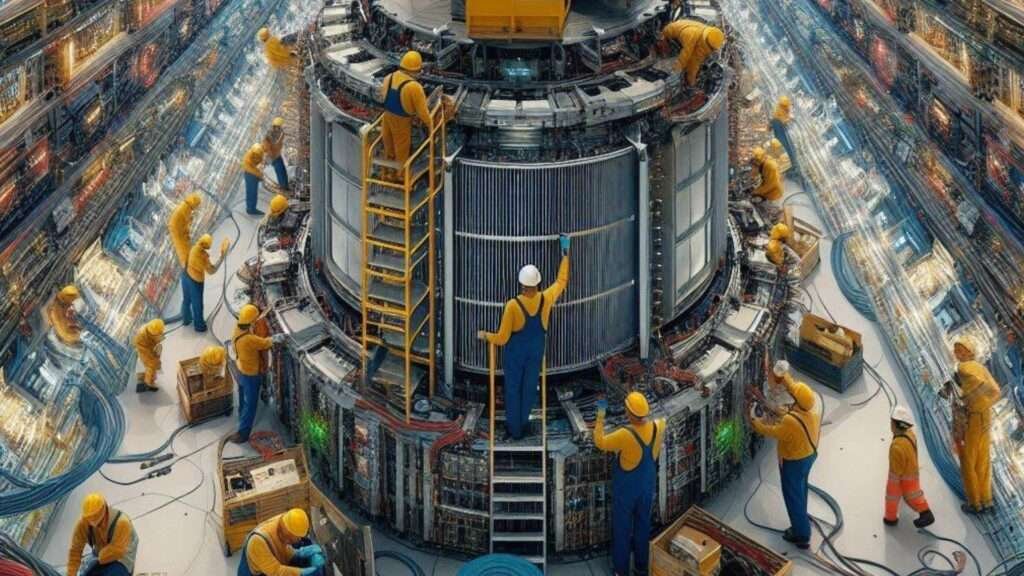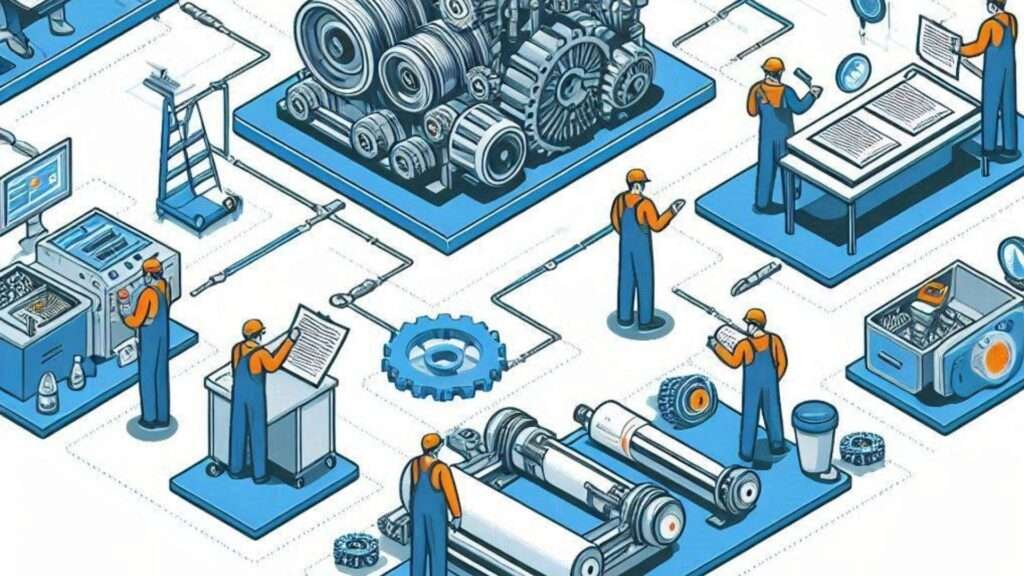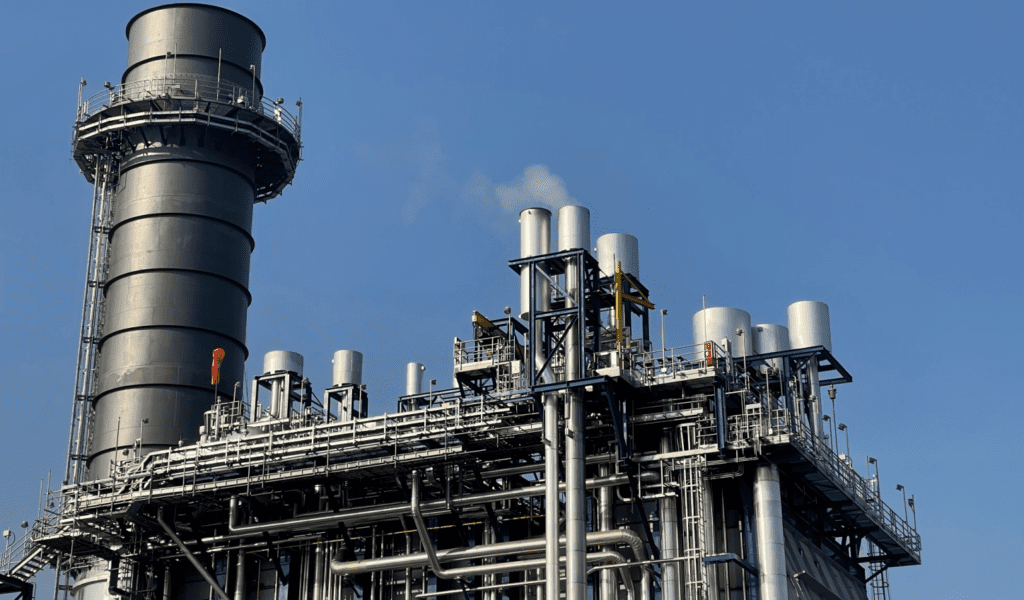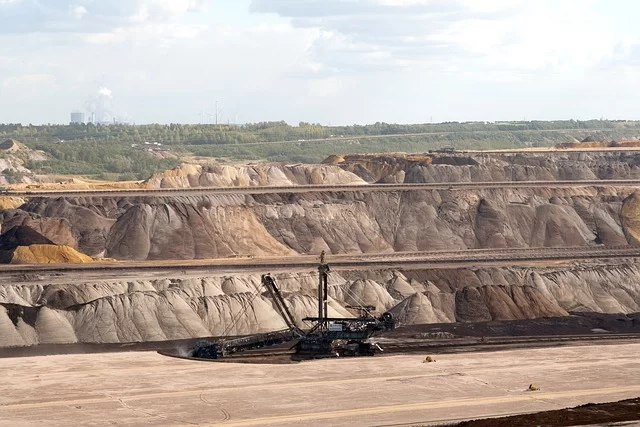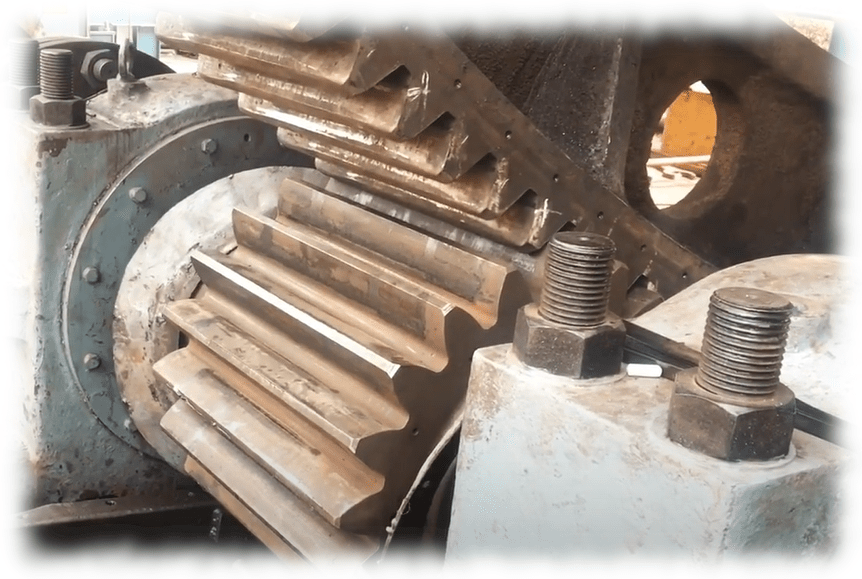Understanding The Asset Management Process.
One should never undervalue the
significance of creating an asset management strategy for businesses that
depend heavily on maintenance.
Asset management requires a
comprehensive and methodical approach when operating a business that requires a
lot of maintenance.
The wall between the production and
maintenance/engineering departments needs to be taken down in order for the
project to succeed.
When these two divisions run
separately, most of the money opportunities lost during an asset’s lifecycle
occur. It is necessary to have an
interdependent asset management culture. It doesn’t make sense to continue down a path
just because something has always been the way it is, especially if you know
your business is losing a lot of money as a result.
The Maintenance & Engineering Team
and the Production Team are responsible for an asset before it is purchased,
during commissioning, and throughout its lifecycle. If both departments discovered that working
together makes it much easier to meet their responsibilities, the benefits
would be numerous and substantial.
Spend your time putting well thought
out solutions into action, rather than working your way through a list of emotional
problems, I’ve
written an article on this very thing.
An asset management plan must be
created, approved, and implemented by the Maintenance & Engineering Team
prior to commissioning assets and transferring them to the production
department.
The production department’s creation,
approval, and implementation of a production strategy prior to accepting any
assets from the maintenance and engineering team is equally significant.
Foster Collaboration and
Communication.
Collaboration and communication are
critical to successful asset management. If your company fosters an
interdependent asset management culture of collaboration and open
communication, it will allow for better knowledge sharing, problem solving, and
decision-making.
Working together to achieve a common
goal is probably written somewhere in every company’s mission statement;
imagine a workplace where this was actually enabled, and even enforced. The possibilities would be limitless.
There’s normally no need
to re-invent the wheel.
On this page and throughout this
website I will discuss the significance of having all-inclusive/comprehensive
asset management & production strategies and I’ll do my best to provide you
with information that will assist with your asset management journey.
There is a plethora of approaches that
can be used to help you develop quality Asset Management Strategies.
Developing a world-class asset
management strategy is crucial for your business, so be sure to look into the
best sources of help when compiling one.
Take your time and do the required
reading then looking to optimize your operations and maximize return on
investment (ROI).
Various methodologies and theories,
such as Buker Business Excellence, Total Production Management, Lean Six Sigma,
Failure Mode, Effects, and Criticality Analysis (FMECA), The 8 Types of Waste and
the Broken Window Theory, can be utilized to enhance the overall effectiveness
of your asset management plan.
Buker Business Excellence.
Buker Business Excellence is an
all-encompassing strategy that aims to align different organizational processes in order to improve overall business
performance.
This methodology simplifies workflows
and aids in finding areas for improvement when used in asset management.
You can improve overall efficiency,
lower downtime, and maximize asset utilization by putting Buker Business
Excellence principles into practice.
Total Production
Management.
The goal of Total Production
Management (TPM) is to minimize losses and maximize the effectiveness of
equipment.
You can guarantee that your assets are
properly maintained, which will increase reliability and lower breakdown rates,
by putting TPM practices into practice.
Along with encouraging proactive
maintenance techniques and a culture of continuous improvement, TPM also places
a strong emphasis on employee involvement.
Lean Six Sigma.
Combining Six Sigma and Lean
Manufacturing principles, Lean Six Sigma is a potent methodology.
Lean Six Sigma can aid in the optimization
of asset management procedures by getting rid of waste and decreasing process
variation.
Identifying bottlenecks, streamlining
workflows, and enhancing asset performance are all possible with the use of
Lean Six Sigma tools and techniques like value stream mapping and root cause
analysis.
Failure Mode, Effects, and
Criticality Analysis (FMECA).
FMECA is a methodical technique for
locating possible faults, evaluating their consequences, and setting
maintenance tasks in order of importance.
You can reduce risks, proactively
address possible failures, and prioritize maintenance tasks by using FMECA.
By ensuring that vital assets receive
the care they require, this analysis reduces downtime and raises asset
reliability levels overall.
Broken Window Theory.
According to the Broken Window Theory,
observable indicators of neglect or damage can cause a rise in crime and worsen
a community’s state.
The Broken Window Theory, when
applied to asset management and your CMMS, highlights the significance of
timely repairs, preventive maintenance and data quality upkeep.
By taking quick action to fix minor
problems, you can keep them from getting worse, lower your maintenance costs
overall, and prolong the life of your assets.
The 8 Types of Waste.
In the context of asset management,
the concept of the 8 types of waste, originally introduced by the Toyota
Production System, can be applied to identify and eliminate inefficiencies.
These wastes are:
1. Overproduction refers
to producing more than what is necessary or before it is needed. In the context
of asset management, overproduction can lead to excess inventory, tying up
valuable resources and increasing holding costs. By identifying and eliminating
overproduction, organizations can optimize their asset utilization and reduce unnecessary
expenses.
2. Waiting waste occurs
when assets or resources are idle due to delays or bottlenecks. This can happen
when maintenance or repair tasks are not scheduled efficiently, leading to
prolonged downtime. By implementing preventive maintenance schedules and
streamlining workflows, organizations can minimize waiting waste and ensure
assets are available when needed.
3. Transportation waste
refers to unnecessary movement or relocation of assets. This can result in
increased risk of damage or loss, as well as additional costs associated with
transportation. By optimizing asset placement and implementing proper storage
and handling procedures, organizations can reduce transportation waste and
improve asset security.
4. Over-processing waste occurs when unnecessary steps or activities are
performed during asset management processes. This can include excessive
inspections, redundant paperwork, or redundant data entry. By streamlining
workflows and eliminating non-value-added activities, organizations can reduce
over-processing waste and improve operational efficiency.
5. Inventory waste refers
to excess or obsolete inventory that ties up valuable resources and incurs
holding costs. In asset management, this can include spare parts, equipment, or
materials that are no longer needed or have become outdated. By implementing
effective inventory management practices, organizations can minimize inventory
waste and optimize resource allocation.
6. Motion waste refers
to unnecessary movement or motion of assets or personnel. This can include
searching for tools or equipment, excessive walking or reaching, or inefficient
layout of workstations. By optimizing asset placement, organizing workspaces,
and implementing standardized procedures, organizations can reduce motion waste
and improve productivity.
7. Defects waste refers
to errors, rework, or quality issues that result in wasted time, effort, and
resources. In asset management, this can include equipment breakdowns,
maintenance failures, or product defects. By implementing proactive maintenance
strategies, quality control processes, and continuous improvement initiatives,
organizations can minimize defects waste and improve asset reliability.
8. Skills waste occurs
when employees are not fully utilized or do not have the necessary skills or
knowledge to perform their tasks efficiently. In asset management, this can
lead to suboptimal asset performance, increased downtime, and reduced productivity.
By providing training and development opportunities, organizations can minimize
skills waste and empower employees to contribute effectively to asset
management processes.
The Need for Quality Asset
Management Strategies.
Effective
asset management is essential for maintenance-intensive companies to ensure
optimal performance, reduce downtime, and extend the lifespan of their assets.
By developing well-defined asset
management strategies, companies can streamline their operations, improve
efficiency, and minimize costs and unnecessary losses.
My 20-Step Asset
Management Process:
1. Create Asset Requirements Package.
a)
The initial step in
asset management is developing an asset requirements package.
b) This package outlines asset-specific needs and
expectations, including performance requirements, technical specifications, and
other relevant details.
c)
By clearly defining
the requirements upfront, organizations can ensure that the assets they procure
align with their operational needs and goals.
2. Procure Assets.
a) Procuring assets is the process of acquiring the
equipment required to support the organization’s operations.
b) This step is critical to ensuring that the
organisation has the necessary assets in place to achieve its goals.
c)
Organisations can
avoid costly mistakes and improve overall operational efficiency by carefully
selecting and procuring assets that are in line with the requirement package.
3. Create Asset
Master Data Files.
a) Asset master data files provide a central repository
of critical asset information, including its specifications, storage and
handling requirements, proactive maintenance requirements, and other critically
relevant details.
b) By creating and maintaining accurate asset master data
files, your company can easily track and manage their assets, make informed
decisions, and optimize maintenance activities.
4. Develop Asset Production Strategies for Assets.
a) Developing asset production strategies involves
determining the most effective way to utilize and maximize the productivity of
assets.
b) By developing strategies that align with the
organization’s production goals, organizations can optimize asset utilization,
reduce downtime, and increase overall productivity.
5. Develop Asset Maintenance Strategies
for Assets.
a) Strategies for asset maintenance are essential to
guaranteeing the dependability and durability of assets.
b) Organisations can optimize the value of their assets
by proactively identifying and resolving possible issues through the
development of comprehensive maintenance strategies that are based on risk
assessments.
c) A few outputs from the maintenance strategies will
include maintenance plans, the frequency of any preventive maintenance tasks,
and suggestions for reducing unscheduled downtime over the asset’s entire life.
By using this strategy, businesses can prevent expensive malfunctions and get
the full market value of their assets.
6. Develop
Maintenance Plans & Executable
Tasks for Assets.
a) Maintenance plans outline the ‘Why and How’ for any specific
activities for maintaining each asset. These plans include all information required
to effectively and safely conduct any regular non intrusive inspections,
preventive maintenance tasks, and any predictive
maintenance requirements.
b) By developing detailed maintenance plans,
organizations can ensure that assets are properly cared for. This minimizes the risk of failures, and
optimizes their overall performance over the full life of the assets.
7. Review and Approve Routine Maintenance Tasks for
Assets.
a) A plan for the retirement of your assets is just as
important as any routine maintenance plans you develop for any assets that are
purchased.
b) Review teams are responsible for making sure that an authorized
asset retirement plan is in place. Asset
retirement strategies entail making plans for an asset’s end-of-life situation.
c) This stage ought to start a full year before any assets
are scheduled to be retired.
Organisations can minimize the effects of asset obsolescence, plan for
replacements, and optimize asset disposal or repurposing by proactively
managing asset retirement.
d) By taking this action, businesses can lower expenses,
control risks, and guarantee a seamless rollout of new assets. Additionally, it guarantees that the
appropriate choice is made regarding what will happen to the asset after it is
retired.
e) You’ll need a thorough Asset Disposal Strategy: Managing
the disposal or decommissioning of assets that are no longer functional or
needed is a part of implementing asset disposal strategies.
f)
Organisations can minimize
their environmental impact, comply with regulations, and maximize their return
on investment by putting into practice appropriate disposal strategies. This phase aids in cost control, upholding
legal requirements, and guaranteeing prudent asset management for
organisations.
8. Commission & Handover Assets to the Production
Team.
9. Develop Routine & Corrective Maintenance
Performance Measures.
10. Approve Routine & Corrective Maintenance
Performance Measures.
11. Schedule
Maintenance Tasks.
12. Execute Maintenance
Tasks.
a. Implementing maintenance execution involves putting
the approved maintenance schedule into action.
b. This step involves assigning tasks to maintenance
personnel, once the maintenance activities have been assigned to the schedule. These tasks are then executed in full, on
time and at specification. The
maintenance planners and supervisors ensure that the necessary resources and
tools are available prior to the trades-people commencing any scheduled task.
c. Effectively executing maintenance plans is yet another
way that companies can minimize downtime, improve asset reliability, and extend
asset lifespan.
d. When breakdown or emergency maintenance occurs, this
should be seen as a failure of the maintenance management system. As such, all instances of completing this
type of urgent maintenance work should be followed up with a Root Cause
Analysis Session/Meeting.
e. Root cause analysis is a critical step in asset
management that involves identifying the underlying causes of asset failures or
unsustainable performance issues.
f. By conducting root cause analysis, organizations can
address the root causes of problems rather than just treating the symptoms.
This approach helps organizations implement targeted solutions, reduce the risk
of recurring issues, and improve overall asset reliability.
13. Complete Maintenance
Tasks within the CMMS.
14. Analyze Routine &
Corrective Maintenance Completion Performance.
a. Monitoring asset performance allows organizations to
track the effectiveness of their implemented asset maintenance management
strategies. It will also highlight how
well maintenance teams respond to unforeseen corrective maintenance needs.
b. By collecting and analyzing data on all types of
maintenance performance, organizations can identify trends, detect potential
issues, and make data-driven decisions.
c. This step enables organizations to continuously
improve their asset maintenance management practices and minimize the
likelihood of budget blowouts. This information
must be transparent and is best
displayed via a dashboard within your CMMS.
15. Audit Maintenance Systems and Processes.
a. Asset Maintenance System audits involve regularly
assessing the condition, performance, and compliance of assets, as well as the
asset management system/CMMS.
b. By conducting asset audits, organizations can identify
any potential issues, ensure assets are being properly maintained, the health of their asset management system
and if the business is complying with any statutory & regulatory
requirements, as well as company policies and procedures.
c. This step helps organizations maintain asset
integrity, minimize risks, and ensure compliance with the law, industry
standards and the overarching framework of the company.
d. You will find my 5 part Maintenance Systems Auditing
Guides within the Blog Page as follows:
i. Part 1
ii. Part 2
iii. Part 3a
iv. Part 3b
v. Part 4
16. Create Maintenance Systems Improvement
Recommendations.
a. Continuous improvement is a fundamental aspect of
effective asset management. By regularly evaluating and enhancing asset production
and maintenance management processes, organizations can adapt to changing
needs, industry trends, and technological advancements.
b. This step helps organizations stay competitive,
optimize asset performance, and achieve long-term success.
c. Embracing technology and innovation is crucial for
staying ahead in asset management. By leveraging advanced technologies and
embracing innovative approaches, organizations can streamline processes,
improve data collection and analysis, and enhance decision-making. Advancements
in AI technology should not be overlooked.
d. Regularly reviewing and updating asset management
strategies is essential to ensure their ongoing effectiveness. By periodically
evaluating the overall effectiveness of any existing asset management
strategies, organizations can identify areas for improvement. It might be that you need to adapt to
changing needs, and align with changes to what’s considered to be industry best
practices. This step helps organizations stay agile, optimize asset
performance, and maintain a competitive edge.
e. A Change
Management System should be used to handle improvement ideas.
17. Review and Approve Maintenance Systems Improvement
Recommendations.
18. Develop Performance Measures for Maintenance Systems
Improvements.
19. Implement Maintenance Systems Improvement
Recommendations.
20.Review Performance of Implemented Maintenance Systems
Improvements.
Creating an Asset
Requirements Package is Essential.
Is your company is seeking an
effective way to make sure their operations will be effectively optimized for
peak performance operate with maximize efficiency?
If so, the answer to this question
begins well before any assets within your operation are commissioned.
One crucial aspect that often goes
overlooked is the development of a Production Requirements Statement (PRS) for any
intended asset purchases.
A PRS is a comprehensive document that
outlines the specific requirements and expectations for any assets a company
intends to purchase.
Developing a PRS is essential for
several reasons. Firstly, it ensures that the company clearly defines its needs
and objectives before entering the market. By clearly outlining the
requirements for the assets, the company can avoid unnecessary purchases or
investments that do not align with its goals (current and future).
This helps in preventing wastage of
resources and ensures a more focused approach to procurement.
Secondly, having a PRS in place allows
for a more efficient and effective evaluation of tenders received from
potential suppliers. When suppliers receive a PRS, they can tailor their
proposals to meet the specific requirements outlined in the document.
This enables the company to make more
informed decisions when selecting the most suitable supplier, as they can
compare proposals based on their alignment with the PRS.
Furthermore, a PRS also serves as a
reference point throughout the procurement process. It provides a clear
framework for evaluating the performance of the purchased assets and ensures
that they meet the company’s expectations.
This helps in minimizing any potential
disputes or issues that may arise during the implementation phase. Developing a
PRS should involve collaboration between various departments within the
company, including operations, maintenance & engineering, health and
safety, purchasing and warehousing and finance.
By involving key stakeholders in the
process, a more holistic and comprehensive document can be created, ensuring
that all relevant requirements are considered.
Developing a Production Requirements
Statement (PRS) is a crucial step for any company before embarking on asset
purchases. It helps in defining the company’s needs, streamlining the
procurement process, and ensuring that the purchased assets meet the desired
objectives. By investing time and effort in creating a PRS, companies can make
informed decisions, optimize their operations, and ultimately achieve greater
success in their endeavors.
The Need for a
comprehensive Production Strategy for Assets.
When it comes to managing complex and
expensive assets, such as machinery or equipment, a well-developed production
strategy is crucial. This strategy serves as a roadmap for the production
department, outlining the steps and considerations necessary to ensure a smooth
and successful commissioning process.
One of the primary reasons why
developing a production strategy is essential is the complexity of these
assets. Complex assets often involve intricate systems, multiple components,
and advanced technologies. Without a clear plan in place, the production
department may struggle to understand the asset’s functionality and how to
optimize its performance.
Additionally, expensive assets come
with significant financial implications. The production department must
carefully consider the costs associated with commissioning and operating the
asset. By developing a production strategy, they can identify potential
cost-saving measures, allocate resources efficiently, and maximize the return
on investment.
A production strategy also enables the
department to address any potential risks or challenges that may arise during
the commissioning process. By conducting thorough risk assessments and
contingency planning, the team can proactively mitigate any issues that could
impact production timelines or asset performance.
Furthermore, a well-designed
production strategy promotes collaboration and alignment within the
organization. It ensures that all stakeholders, including production managers,
engineers, and maintenance personnel, are on the same page regarding the
asset’s objectives, requirements, and operational procedures.
Ultimately, developing a production
strategy for complex and expensive assets is a proactive approach that
minimizes risks, optimizes performance, and maximizes the asset’s value. It
allows the production department to streamline operations, reduce downtime, and
deliver products or services efficiently, resulting in improved customer
satisfaction and a competitive edge in the market.
‘Develop a Plan’ and then ‘Stick
To It’.
Maintenance-intensive organisations
must have effective asset management in place to ensure long-term success. Staying on the path requires a high level of
commitment, and both internal and external pressures can make it extremely
difficult at times.
It is essential that you have the
courage to ‘stick your hand up’ and get some help when staying on the path is
‘all of a sudden’ becoming difficult.
Do not allow your company to deviate
from the path to successful asset management for any longer than
necessary. There is too much at stake to
let pride get in the way of doing important work.
Consider reading my article on how the Broken Window
Theory can be applied to Asset Management Systems.
By implementing the asset management
steps you develop at your company, you can optimize your resources, create a
plan to reduce downtime, and ensure the longevity of your assets.
Your organization can achieve
operational and maintenance excellence and thrive in today’s competitive
business landscape by carefully selecting assets, planning them, performing
proactive maintenance, and implementing continuous improvement.
Finally, try not to be overly
cost-conscious when it comes to the hardware that powers your multi-million
dollar asset management software.
Desktop computers, laptops, and monitors are now significantly less
expensive than they were in the past.
If there are people on your team who believe they could accomplish more
with three or four monitors rather than two, let them try. Is it really worth holding them back for
$300?

